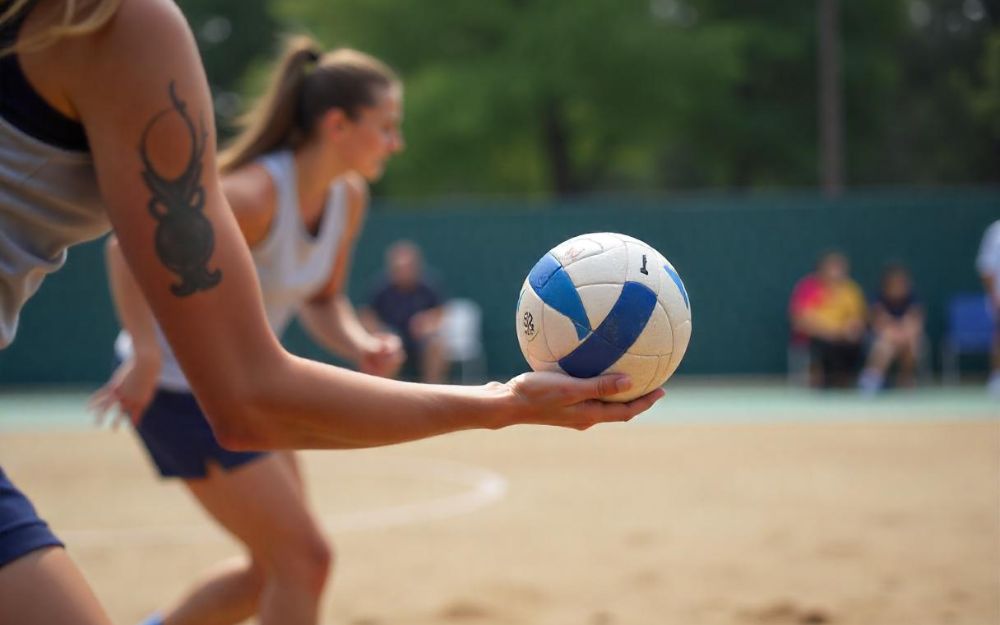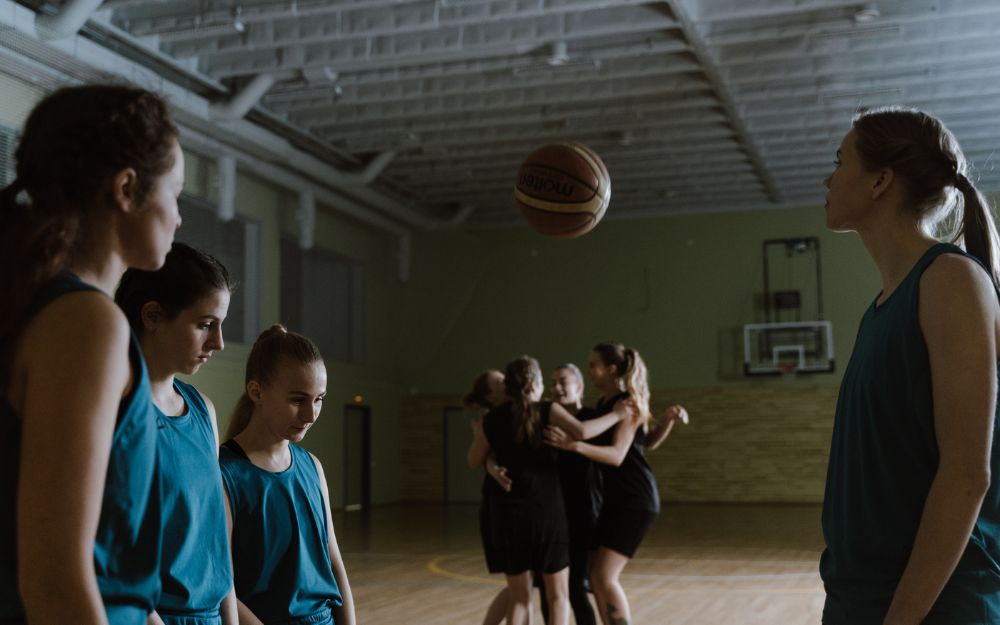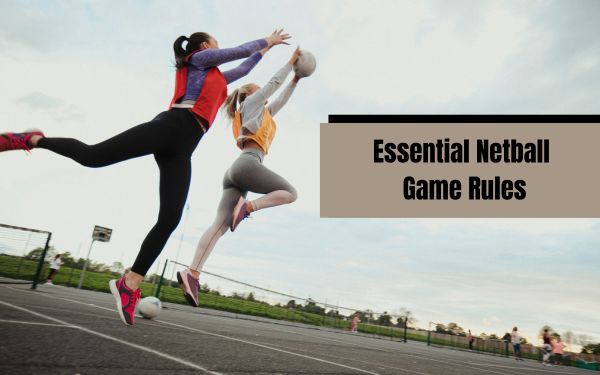Netball is an energetic and speedy sport that is played by millions of people all over the world. It is more popular in countries like Australia, New Zealand, the United Kingdom, and South Africa. Netball is a team sport that requires agility, strategy, and teamwork. Whether you are a beginner or you want to improve your skills, learning how to play netball is essential in order to enjoy the game.
In this article, we’ll explore the history of the netball game, provide a step-by-step guide on how to play netball for beginners and share tips on becoming the best player on the court.
What is a Netball Game?
Seven teams play a sport of netball on a rectangular court alongside goalposts located at both ends. Achieving goals through ball shots into opposing net boundaries determines victory under specific netball rules.
The competitive game consists of four time periods each amounting to fifteen minutes. Each player has a specified area on the court while movement in general remains prohibited. Netball features rigid rules for movement along with passing regulations that distinguish it from basketball and related ball sports.
How was Netball First Played?
During the late 19th century, players in England played netball exclusively for female athletes as a modified version of basketball rules. The sport was specifically developed for women because practitioners believed that basketball was too strenuous for females in the early times. The rules of netball developed from basketball, yet the game received specific changes by eliminating dribbling and establishing set court positions.
During the beginning of the 20th century netball spread across Commonwealth nations to become highly successful in many areas. Professional and amateur levels feature netball games alongside international championships including the Netball World Cup and the Commonwealth Games that highlight the best athletes.
How to Play Netball for Beginners Step by Step?
If you’re new to the sport and wondering how to play netball for beginners, follow these step-by-step guidelines to understand the game better.
Step 1: Understand the Court and Positions
A standard netball court is divided into three areas: the attacking third, the center third, and the defensive third. Each player has a position and must adhere to specific movement restrictions.
- Goal Shooter (GS) – Scores the goals and stays in the attacking third.
- Goal Attack (GA) – Helps in shooting and is allowed to move in the attacking and center thirds.
- Wing Attack (WA) – Passes the ball to shooters but cannot penetrate the goal circle.
- Center (C) – Freely moves in the center and both attacking and defensive thirds but cannot penetrate the goal circles.
- Wing Defense (WD) – Marks the other WA and stops passes into the attacking third.
- Goal Defense (GD) – Covers the Goal Attack and assists the goalkeeper.
- Goal Keeper (GK) – Guards against the Goal Shooter and blocks goals.
Step 2: Learn the Passing Techniques
All players must pass the ball instead of dribbling because dribbling remains illegal in netball play. Multiple types of passes occur during a netball match:
- Chest Pass – A fast precise pass evolves from the chest region.
- Bounce Pass – A Bounce Pass describes a pass which bounces exactly once before successful recipient reception.
- Overhead Pass – An overhead pass travels high through the air to provide defenders with another route to obtain the ball.
Step 3: Master the Footwork Rules
According to rules of the game players cannot step or move both feet simultaneously after gaining possession of the ball. Players need to keep their support foot fixed while making their decision about their following action.
Step 4: Understand Shooting Techniques
Slotting points in a netball match becomes possible when shooters apply accurate aim with controlled ball handling. Shooting the ball requires holding it with both hands, backs bent at knees before using a flipping motion toward the net.
Step 5: Defensive Strategies
Defenders play a crucial role in preventing the opposing team from scoring. Good defensive techniques include:
- Shadowing the opponent to limit their movement.
- Intercepting passes to regain possession.
- Marking players by staying within three feet of them while maintaining a defensive stance.
By mastering these basics, beginners can quickly get a grasp on how to play netball effectively.
What are The Stages Of Learning Netball?

Similar to any sport, it takes some time to master the netball game. Netball learning phases can be outlined as follows:
1. Foundation Stage
In this stage, learners acquire the overall rules, the court design, and the most basic skills, such as passing, catching, and footwork.
2. Development Stage
Skilled players will enhance their playing skills and positioning, movement, and gameplay plan understanding.
3. Performance Stage
In this stage, players acquire tactical perception, teamwork, and sophisticated skills like fakes, feints, and strategic passing.
4. Elite Stage
Top players get into the elite stage, competing in professional leagues and global tournaments.
Every stage advances from the earlier one so that players can build their skills gradually.
How to be The Best Netball Player?
To be a better player in a netball game, one should emphasize skill training, fitness, and strategy. The following are some important tips for being a top netball player:
1. Improve Fitness and Agility
Netball involves rapid movement, fast reflexes, and stamina. Make agility drills, sprinting, and endurance exercises a part of your regimen to improve performance.
2. Perfect Ball Handling Skills
Practice passing accuracy, catching styles, and shooting accuracy. By practicing every day, you will become a better player.
3. Develop Game Awareness
Knowledge of the game movement, interpreting opponents’ actions, and anticipating passes will provide a strategic edge.
4. Communicate with Teammates
Smooth passing and coordinated action depend on effective communication. Call for the ball and use proper signals at all times.
5. Follow Netball Rules Strictly
Following formal netball rules will help you avoid penalties that are not necessary. All netball players must follow three-second rules and both footwork rules and positional boundary rules.
These combination of factors will raise your playing ability to become a top player that any netball team would want.
Conclusion
Netball game presents an arcade-style competition to its players who receive physical advantages along with thrilling social challenges and demanding gameplay requirements. The knowledge of fundamental netball rules together with proper positions along with appropriate playing techniques becomes essential for all players despite their experience level.
To achieve higher netball skills, you need proper equipment to make improvements possible. High-performance comfort and style come together in our Netball Singlet – Elite Paneled which you can buy directly from this link. Order now to reach the next level of performance. Your team requires unique netball uniforms that need to be custom-made. You can secure superior quality apparel with our best price offers right now by requesting a quote.






